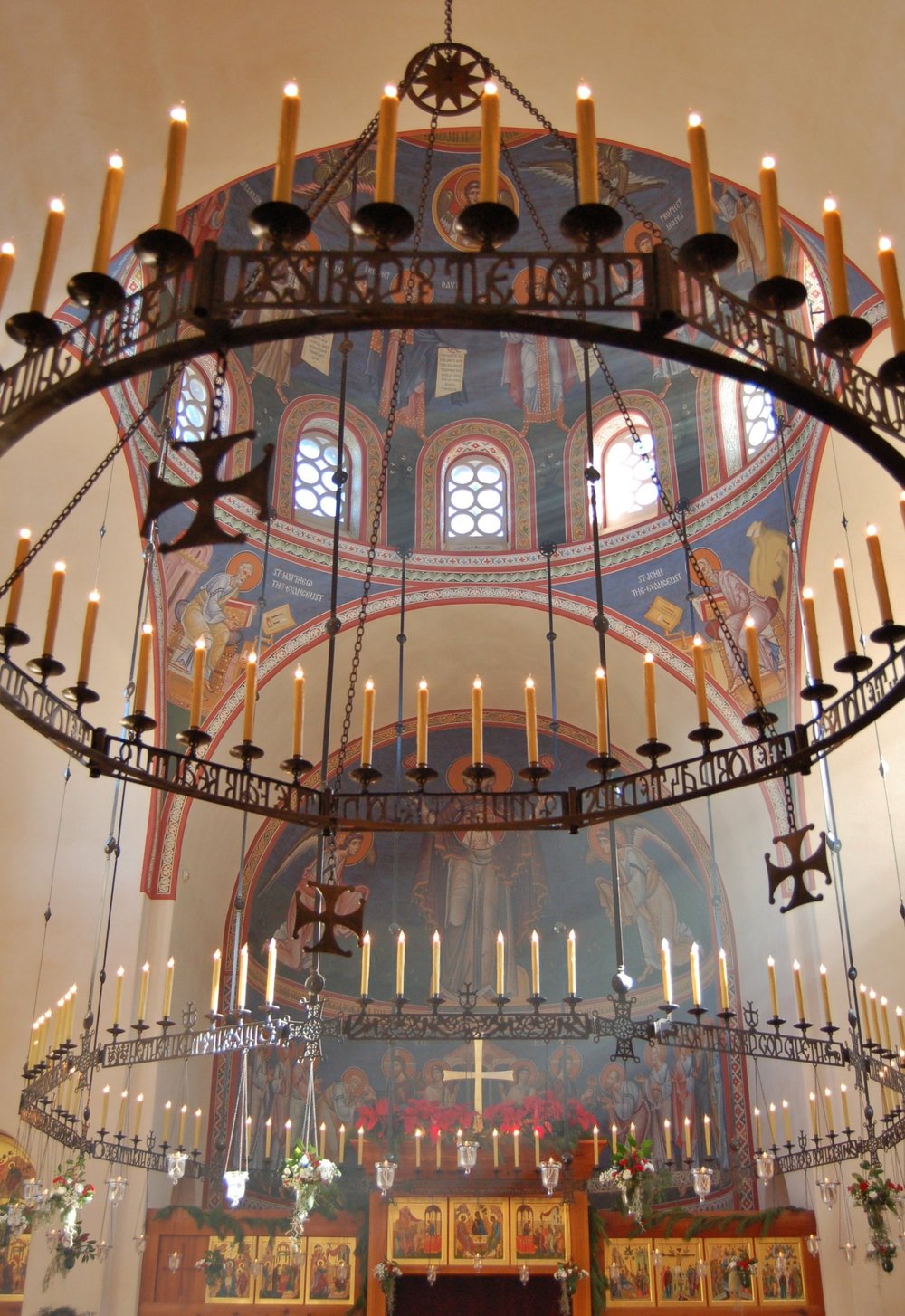
There were a lot of different subjects swirling around during this week’s “Crossroads” podcast, so I don’t know exactly where to start. (Click here to tune that in or head over to iTunes.)
On one level, host Todd Wilken and I talked about church buildings and sacred architecture. You know, the whole idea that church architecture is theology expressed in (List A) stone, timber, brick, stucco, copper, iron and glass.
Ah, but is the theology different if the materials being used are (List B) sheetrock, galvanized steel, plastic, concrete, rubber and plywood?
What if you built a Byzantine, Orthodox sanctuary out of the materials in List B and accepted the American construction-industry norms that a building will last about 40-50 years? Contrast that with a church built with List A materials, using many techniques that have been around for centuries and are meant to produce churches that last 1,000 years or more.
These two churches would look very similar. The provocative issue raised by church designer and art historian Andrew Gould — of New World Byzantine Studios, in Charleston, S.C. — is whether one of these two churches displays a “sacred ethos” that will resonate with the teachings of Eastern Orthodox Christianity, while the other may be both modern and more temporary.
Here’s another question along those same lines: Why did farmers, merchants and peasants in places like Greece, Russia, Serbia and Romania for many centuries insist on building churches that would last for generation after generation of believers? Also, why are the faithful in many modern, prosperous American communities tempted to build churches that may start to fall apart after a few decades?
Here’s the end of my “On Religion” column about Gould and his work, based on a lecture he gave at my own Orthodox home parish in Oak Ridge, Tenn. — which is poised to build a much-needed new sanctuary.
“If you build something that looks like a Byzantine church, but it isn’t really built like a Byzantine church, then it isn’t going to look and sound and function like a Byzantine church — generation after generation,” said Gould.
“The goal in most architecture today is to create the appearance of something, not the reality. … When you build one of these churches, you want the real thing. You want reality. You want a church that’s going to last.”
Now, is this a very newsworthy subject?
Maybe not. But some of these issues can be spotted looming over big headlines some big stories in places like New York City.
Remember that big New York Times feature recently about Trinity Church-Wall Street, the wealthy Episcopal parish in lower Manhattan? You may recall that, in addition to interesting themes about that historic parish (and efforts to restore its amazing sanctuary), that long feature also talked about a number of New York churches that are deteriorating to the point that they may have to be destroyed.
I asked Gould about that Times story and he made an interesting observation: The older churches in New York City are probably holding up better than some of the new ones. The bottom line: Galvanized steel, thin layers of brick and sheetrock were never intended to deal with acid rain and pollution linked to modern trucks, busses and automobiles. Timber and stone, however, will probably require some repairs, but the building is going to be worth repairing.
Then there are all kinds of debates, these days, linked to zoning laws that attempt to control traffic, noise (even church bells) and activities linked to large, thriving churches. Is that news? You bet.
Interesting. And then there’s the theology expressed in the buildings themselves.
Take a classic, Gothic cathedral in which all the sight lines point toward the altar and sacred art linked to the Incarnation and Resurrection of Jesus Christ. Is that theology different than a giant, mall-friendly megachurch in which the theater seats are focused on huge multimedia screens, a clear plastic pulpit and a studio-quality zone for a rock band?
These theological clashes can even be seen in sanctuaries build by flocks in liturgical, ancient “traditions.”
Consider the photo at the top of this post. Scroll back up there.
What is this building? Would you guess that this is a Roman Catholic sanctuary in postmodern Europe? What is the theological content of this architecture?
Or how about the final picture, below. Would you guess that this is an Orthodox church? Yes, that’s easy. But would you guess that it’s a relatively new church in South Carolina? What is the theological content of this architecture?
Like I said, there were many interesting and even controversial issues to discuss, linked to this topic. Church building projects have the potential to make news and inspire debates on many different levels.












